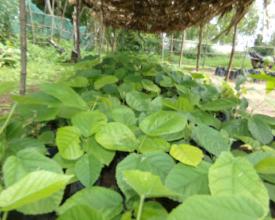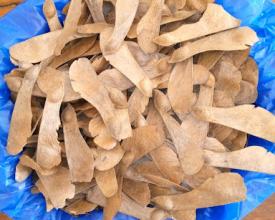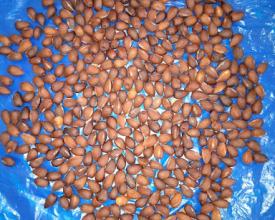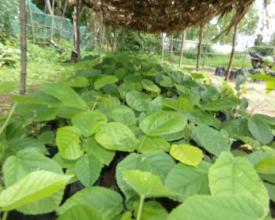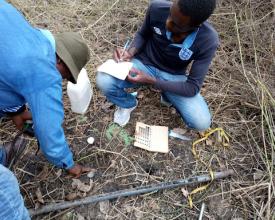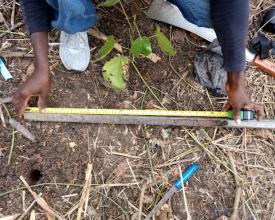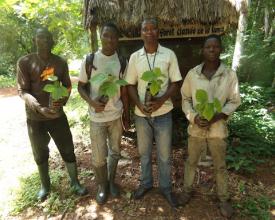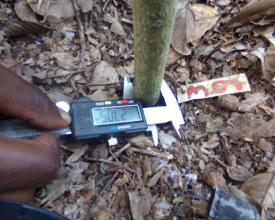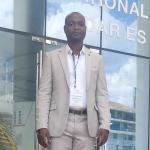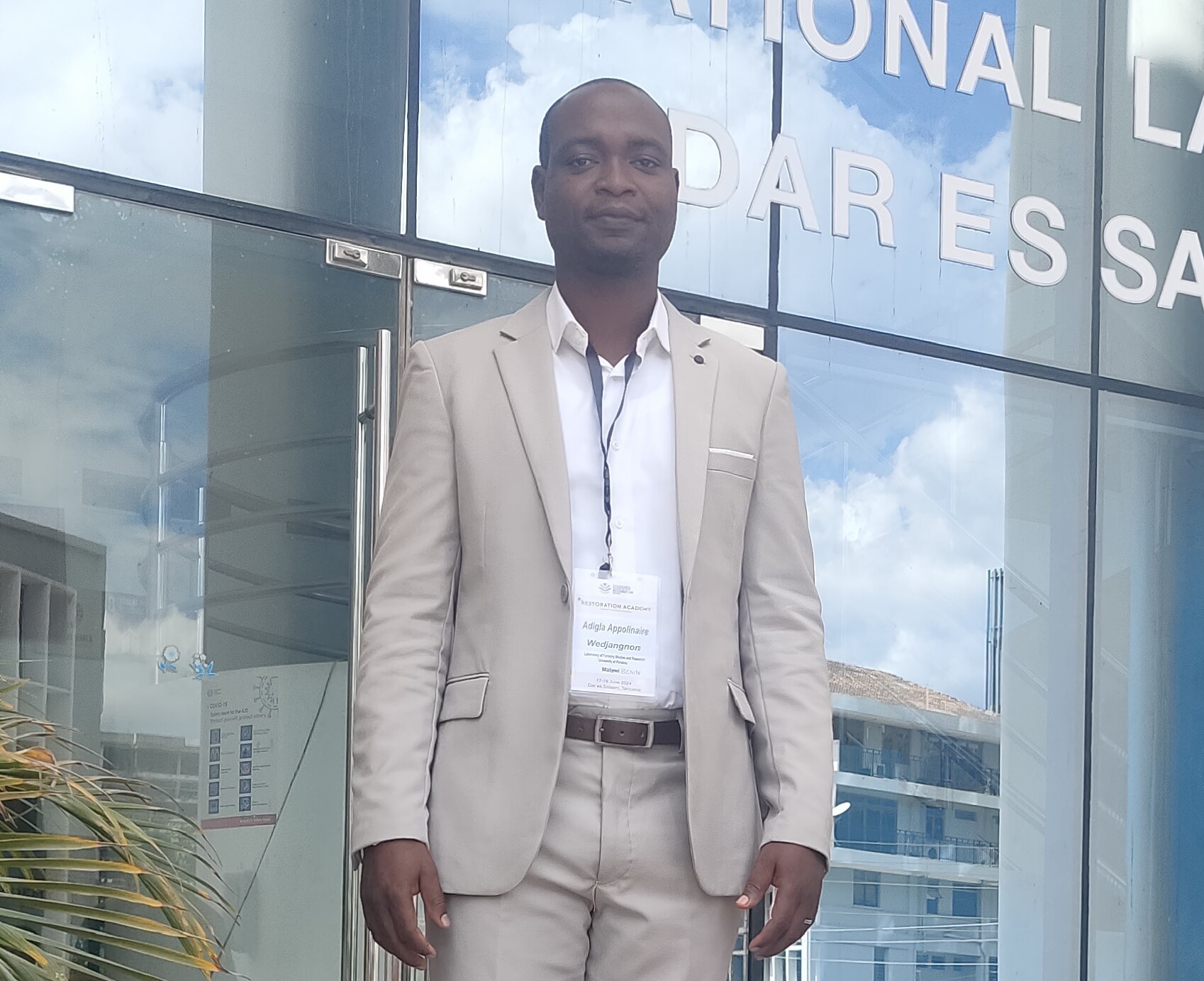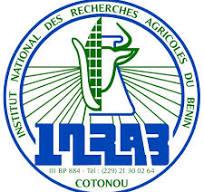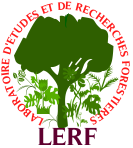
Conservation of Critically Endangered Tree Species: The Case of the African Black Walnut (Mansonia altissima A. Chev.) in Benin
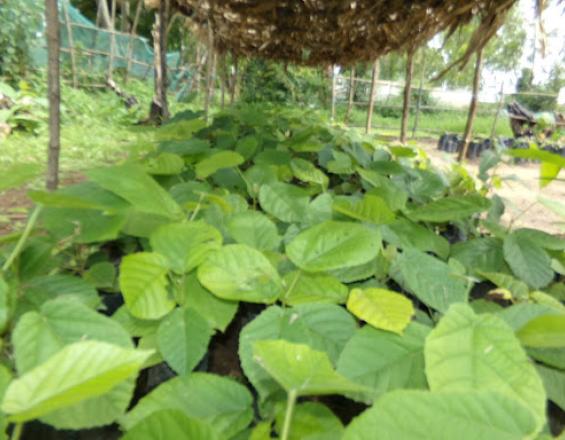
Conserving critically endangered species may involve translocation, assisted migration, introduction, or reintroduction to suitable sites. The African Black Walnut faces extinction in Benin, because of the small size of its population and the habitat degradation from agriculture, forest fires, and logging. Our solution has focused on seed germination, seedling growth, and introduction into protected forest ecosystems. One of the foremost challenges in this solution lies in identifying appropriate microsites that can support the species restoration. Thus, we have introduced seedlings into three protected forest ecosystems, with significant differences in terms of soil properties. One of the three sites, the Lama Forest Reserve (LFR), exhibits the highest nutrient levels and optimal conditions for plant growth. These favorable conditions led to the impressive growth of the species at the LFR. Furthermore, the species was fruited within five years, demonstrating the potential for its reproduction and dispersal in these forests.
Contexto
Défis à relever
Environmentally, habitat degradation due to agriculture, forest fires, and land use threatens the survival of critically endangered species. The solution focuses on seed germination, growing seedlings, and introducing them into protected forest areas. Finding the right microsites, for planting is crucial for successful restoration.
Socially, there may be issues related to how local communities interact with these forest areas. Their practices can impact conservation efforts, as agricultural expansion and land use can limit the habitat where the species can grow.
Economically, biodiversity loss can affect local economies, especially if the ecosystem services the forests provide are diminished. Restoring biodiversity can improve the health of ecosystems, support local livelihoods, and provide resources.
The introduction of seedlings into three protected areas, like the highly suitable Lama Forest Reserve, has shown promising results, indicating that this solution can help the species thrive.
Ubicación
Procesar
Summary of the process
Conserving rare species by translocation, or reintroduction is essential in filling the gaps of natural recruitment and dispersal caused by habitat loss, fragmentation, and isolation to ensure the restoration of rare plant populations. Focusing on seed germination and seedling growth lays the foundation for creating healthy plant materials for biodiversity and ecosystem restoration. These healthy plants thrive better in nutrient-rich soils, like those in the Lama Forest Reserve, which has been identified as an optimal site for the African Black Walnut planting. Understanding and utilizing favorable soil conditions can improve plant survival and growth rates and ensure the successful establishment and restoration of endangered species. This combination of effective seed germination and seedling-raising techniques, along with choosing suitable planting locations, enhances the overall success of restoration and conservation efforts, creating a cycle where each factor supports and reinforces the others.
Building Blocks
Seed collection, germination, and seedling production
Making materials avilable to initiatite the restoration and conservation process for the plantation of seedlings. The purpose is to ensure that we have enough young plants for the species introduction into the identified protected forest ecosystems. We collected seeds from the existing population of the target species and sowed them in polyethylene bags filled with forest soil at the forest nursery. This block also focuses on providing the right care and environment for young seedlings to grow strong. It includes watering, protection from pests, and ensuring they get enough sunlight. Healthy seedlings are more likely to survive when planted. We raised the prouted seedlings for six months in field conditions before planting them.
Enabling factors
As conditions important for successful seedling production, conservationists need high-quality and healthy seeds, a nursery with poor light-penetrated shading, a permanent water source, containers, and a medium. Establishing a reliable schedule for watering, fertilizing, and monitoring light conditions helps seedlings to grow faster. Regular checks for pests and diseases are necessary to protect seedlings and ensure healthy growth of plants.
Lesson learned
Mass production of seedlings for restoration and conservation requires many financial resources and human capital for nursery care. However, this is a way to secure the establishment of planted trees in forest ecosystems. We also learned that seeds of different species may require tailored germination techniques. There is no one-size-fits-all approach to grow seedlings of all species. It is crucial to understand the specific needs of each seed type before starting.
Identify and prepare suitable planting microsites, especially protected sites with suitable conditions that can support the species growth
The purpose is to find the best locations for planting the seedlings. We look for microsites with suitable biotic and abiotic conditions that will help the plants thrive. Identifying suitable microsites involves performing soil physical and chemical analysis. Preparing these microsites involves clearing weeds and making sure the soil is ready for new plants.
Enabling factors
The soil quality and accessibility are important as soil nutrient and permeability state are vital for seedling survival and growth. The microsites should be easily accessible to ensure maintenance activities and monitoring.
Lesson learned
Identifying suitable microsites can take time and requires thorough soil analysis. We discovered that not all nutrient-rich areas are easily accessible, so having backup microsites is helpful. Additionally, clearing the microsites effectively is vital to ensure no competing plants hinder seedling growth.
Partnerships: indigenous people and local communities engagement
Collaboration with indigenous people and local communities (IP&LC) and organizations is essential. Through community engagement we are able to mobilise IP&LC in helping to protect the forests and restoration sites and support our efforts. By working together, everyone can contribute to the conservation goals and increase success.
Enabling factors
Mutual trust and communication are essential to build strong relationships with IP&LC and organizations for successful restoration actions. IP&LC can include farmers and wildlife wardensm organizations can include forest offices. To build and maintain strong relationships, we have learned that impactful engagement with IP&LC requires developing shared objectives to keep everyone focused and motivated toward common conservation goals.
Lesson learned
We faced challenges when trying to engage IP&LC without first understanding their needs and perspectives. Take time to listen and involve them in the process from the beginning to foster better cooperation. Engage with IP&LC through consultations and identification of species that are important for them and can help improveing success.
Monitoring and research
Monitoring and evaluation allows us to effectively keep track of how the plants are doing by regulaurly studying the microsite conditions. The purpose is to gather information that helps us understand what works and what needs improvement. Continuous rese
Enabling factors
Resource availability: Access to tools, trained personnel, and financial support for effective monitoring is crucial to gather reliable data. A regular data collection and analysis allow us to better appreciate species performances and factors that impact seedlings establishment.
Lesson learned
Monitoring and research are important for data sharing. Based on soil properties predominantly related to the African Black Walnut development, our findings shed light on how soil parameters contribute to species distribution at the fine scale. Thus, we found new information concerning the habitat requirements which are quite interesting and valuable for the ex-situ management and conservation of Mansonia altissima.
Impacts
1. Environmental Impacts: The introduction and growth of the African Black Walnut have improved forest ecosystems. In the Lama Forest Reserve, the species grew significantly better, with an increase in height and biomass compared to other sites. For example, the trees in Lama reached an average height of 5 meters within five years, whereas those in Pobè and Itchèdè only reached 2 meters.
2. Biodiversity: By enhancing the population of the African Black Walnut, we are also supporting and increasing species diversity in these habitats. The growth in woodland cover in the Lama Forest Reserve has led to a noted increase in local wildlife sightings, improving the balance of the ecosystem. Through our conservation actions, we have contributed to safeguarding this critically endangered tropical wood species in Benin.
3. Social Impacts: The local communities benefit through increased awareness and participation in conservation efforts. Conservation actions conducted in these areas have involved over 100 local participants, teaching them about sustainable practices and the importance of biodiversity.
4. Economic Impacts: The success of the plantations can lead to local economic benefits. As these trees begin to produce valuable wood, they can be harvested sustainably, potentially generating income for local communities and organizations.
Beneficiaries
1. Local Communities have gained knowledge and skills in sustainable conservation practices.
2. Foresters and wildlife wardens involved in conservation efforts have found valuable collaboration opportunities.
3. Academic and Research Institutions
Sustainable Development Goals
Story
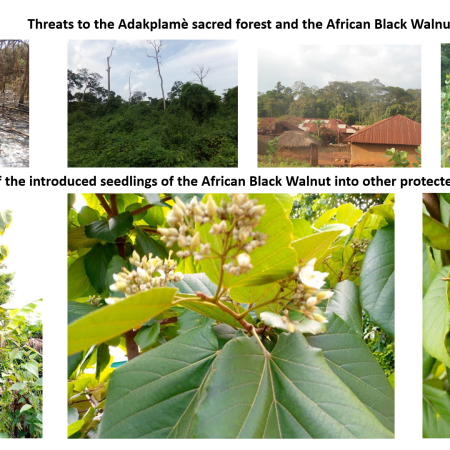
A few years ago, the sacred forest of Adakplamè, home to the African Black Walnut, was facing severe degradation due to rampant deforestation from illegal logging and expanding agricultural practices that overlooked biodiversity. The indigenous communities, dependent on agriculture, were grappling with declining soil fertility, leading to reduced yields and economic instability. Shrinking wildlife habitats endangered several species, while the cultural connection of the communities with their natural surroundings was eroding.
During a research visit to the sacred forest, I witnessed the devastating effects of unsustainable practices, logging, and forest fires on the unique habitat of Mansonia altissima in Benin. Once-thriving semi-deciduous forests were reduced to patches of dead trees and weeds. Conversations with the indigenous people revealed their frustration; many wanted to protect their forest heritage but felt trapped in conflicts between traditional authorities and local communities from neighboring villages, which fueled unsustainable practices and forest degradation.
In Benin, sacred forests are small ecosystems preserved by indigenous populations due to their importance for deities and cultural rituals. However, these forests are under increasing anthropogenic pressure, leading to anarchic exploitation and declining management. Covering about 738ha until 2012, the Adakplamè sacred forest, holds significant biodiversity and cultural heritage, including the royal palace. Historically, it served as a refuge for indigenous people during the raids of the Danxomè kings.
Inspired by the critically endangered status of Mansonia altissima and the resilience of the indigenous communities, I assembled a multidisciplinary team of ecologists, conservationists, and indigenous leaders to devise solutions. Through multiple community meetings, villagers expressed a desire to restore their land while generating income sustainably. This led to the idea of integrating the African Black Walnut tree as a promising solution.
After thoroughly researching the species' silviculture and ecology, we introduced it into three protected forests. The collaboration between indigenous people, conservationists, and restoration experts resulted in the growth of new populations and the transformation of the local communities.
This journey taught us valuable lessons about collaboration, resilience, and innovation, demonstrating how small actions can evolve into a model for sustainable natural resource management.

